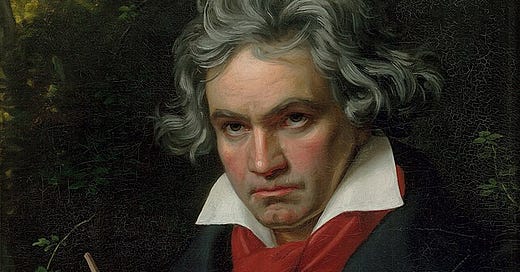Symphony No. 9 in D Minor, 4th Movement (1818-1824)
Whether Beethoven’s adaptation of Friedrich Schiller’s poem “Ode to Joy” was actually intended as any sort of protest remains open to debate — the origins of the theory seem to center on an editor’s footnote in a novel called Das Musikfest by Robert Griepenkerl.
Still, that Schiller wrote his ode to freedom and subsequently switched it to joy for fear of retribution from a Prussian government that was hardly welcoming to revolutionary thinkers remains an attractive theory.
That Beethoven would choose to incorporate such a text at the same time Metternich’s Carlsbad Decrees were suppressing artists in the German Confederacy certainly seems a bold statement addressing such oppression.
The European Union’s 1971 adoption of the work as the European Anthem would seem to take the wind out of the sails of any revolutionary power it once had, but the late 1980s would resurrect its power as a protest song.
“Ode to Joy” was broadcast in Tiananmen Square during the famous protests of 1989, and its performance was conducted by Leonard Bernstein at the fall of the Berlin Wall later that year (with “joy” changed to “freedom” — freude to freiheit) reaffirmed the revolutionary power of Beethoven’s masterpiece.
Even if Beethoven’s intent were simply to express the wonder of living, the joy he felt at being able to continue composing even though by then he was completely deaf, he would likely be pleased with the powerful meaning ascribed to his magnum opus.
– Mike Schiller















Share this post